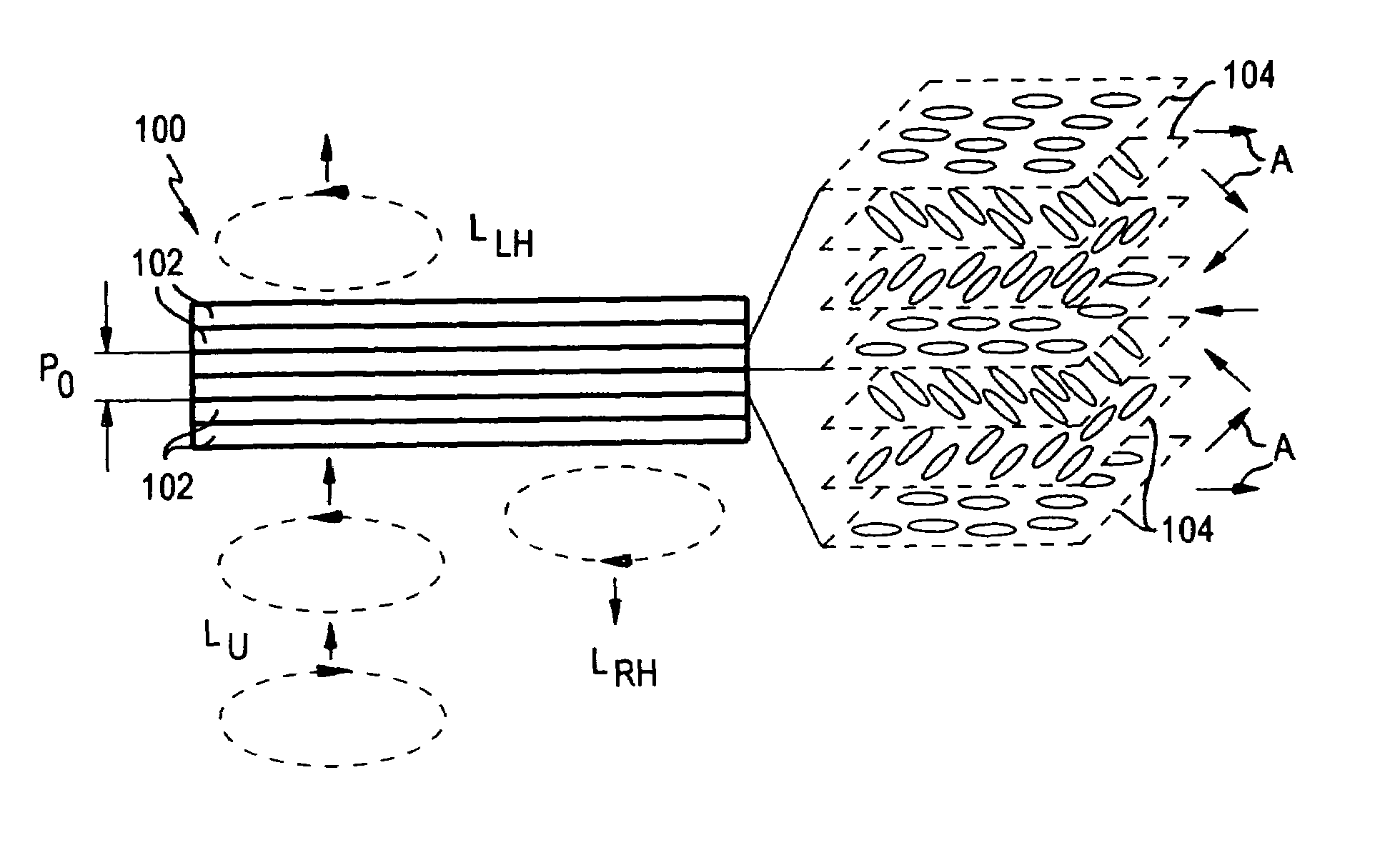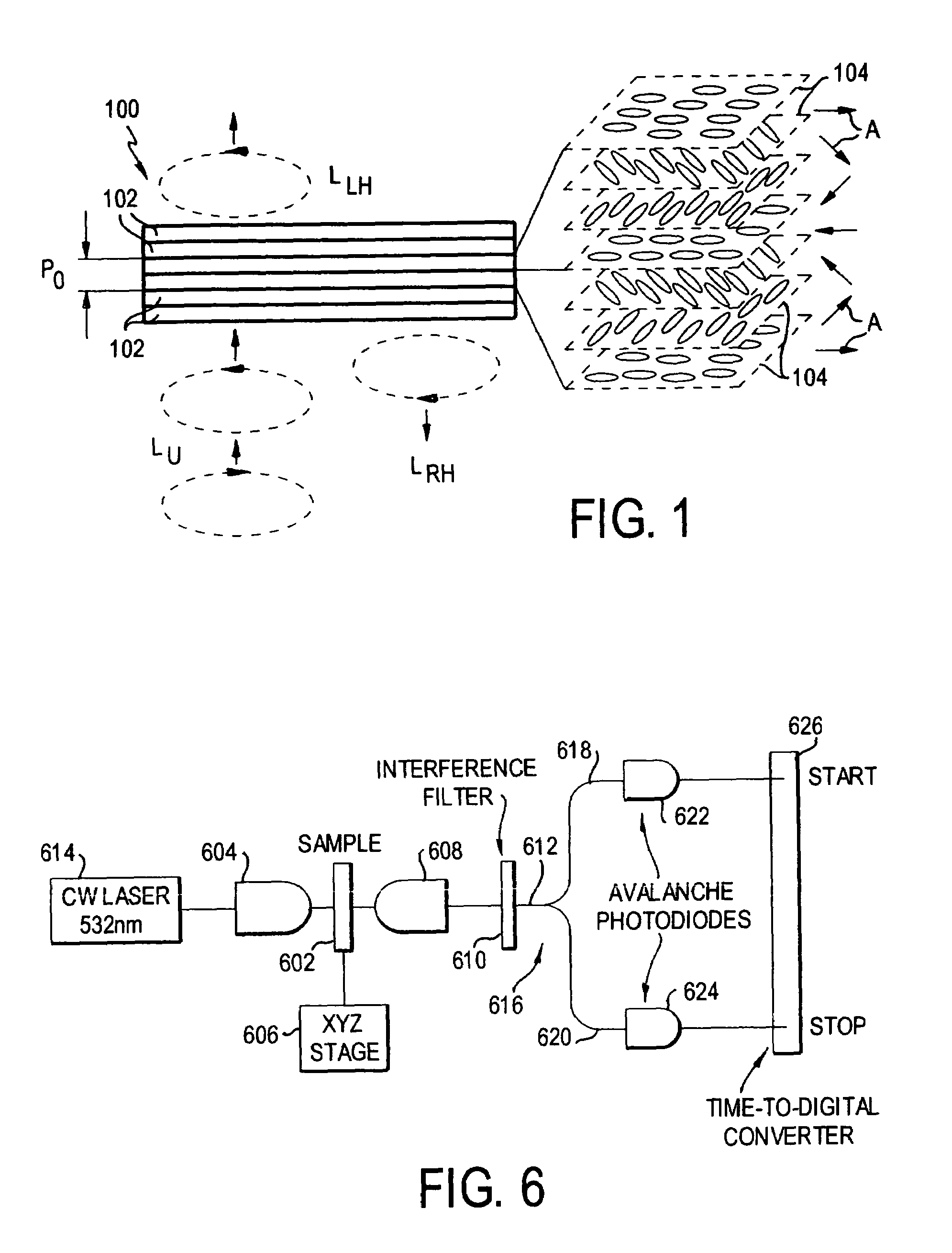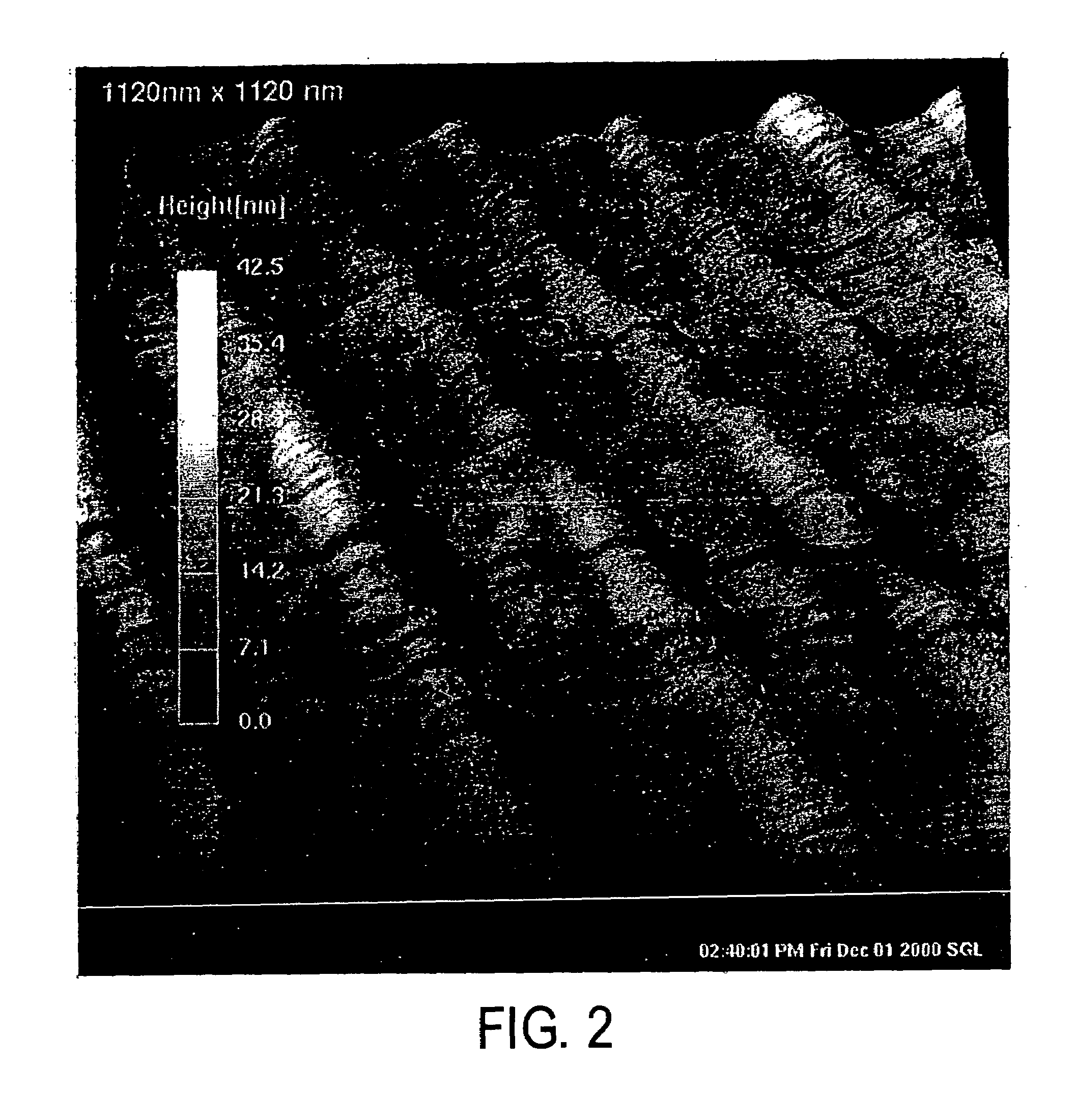Efficient room-temperature source of polarized single photons
a single photon, room temperature technology, applied in the field of quantitative information technology, can solve the problems of limiting the application of polarized single photons, affecting the efficiency of polarized single photon room temperature sources, so as to prevent the bleaching of emitters, increase the efficiency of sps, and achieve maximum excitation efficiency
- Summary
- Abstract
- Description
- Claims
- Application Information
AI Technical Summary
Benefits of technology
Problems solved by technology
Method used
Image
Examples
Embodiment Construction
[0033]A preferred embodiment of the invention and experimental results therefrom will now be set forth in detail with reference to the drawings.
[0034]For visualization purposes, planar cholesterics (chiral nematics) can be described as consisting of a layered structure (although physically they do not have such a structure). For example, as shown in FIG. 1, a planar-aligned cholesteric 100 can be viewed as made up of a plurality of layers 102, of which expanded views showing the molecular orientations are shown as 104. The axes A of the molecular director (rightmost set of arrows) rotate monotonically to form a periodic helical structure with pitch Po. When a solid, planar-aligned cholesteric is flipped on its side and inspected by a high-resolution tool such as an atomic-force-microscope, the periodic pitch becomes observable through height variations along the helical axis. For instance, FIG. 2 shows such a topography for a Wacker cyclo-tetrasiloxane-oligomer cholesteric liquid-cr...
PUM
| Property | Measurement | Unit |
|---|---|---|
| fluorescence life time | aaaaa | aaaaa |
| fluorescence life time | aaaaa | aaaaa |
| thick | aaaaa | aaaaa |
Abstract
Description
Claims
Application Information
 Login to View More
Login to View More - R&D
- Intellectual Property
- Life Sciences
- Materials
- Tech Scout
- Unparalleled Data Quality
- Higher Quality Content
- 60% Fewer Hallucinations
Browse by: Latest US Patents, China's latest patents, Technical Efficacy Thesaurus, Application Domain, Technology Topic, Popular Technical Reports.
© 2025 PatSnap. All rights reserved.Legal|Privacy policy|Modern Slavery Act Transparency Statement|Sitemap|About US| Contact US: help@patsnap.com



